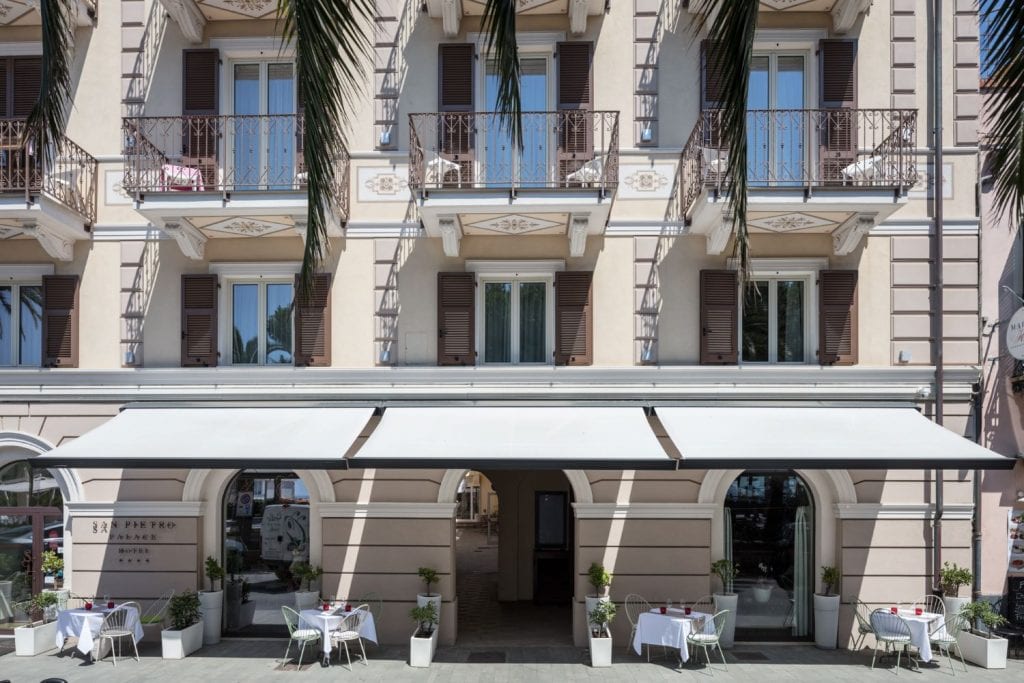
Shelter against sun and heat, furnishing element, shield against rain, fellow of privacy. The fabric for awnings can assume many different functions depending on the needs of the individual project and the outdoor structure to which it is combined.
New technologies have optimized the performances of awnings and pergolas, which now implement the use of customized, high-performing and recyclable technical fabrics, inspired by the use of fabric for awnings.
Each element, from the material to the colour, to the weave and positioning of the awning, offers different results and benefits, to be carefully evaluated during the design phase. So which fabrics for awnings are the most suitable for every need and context?
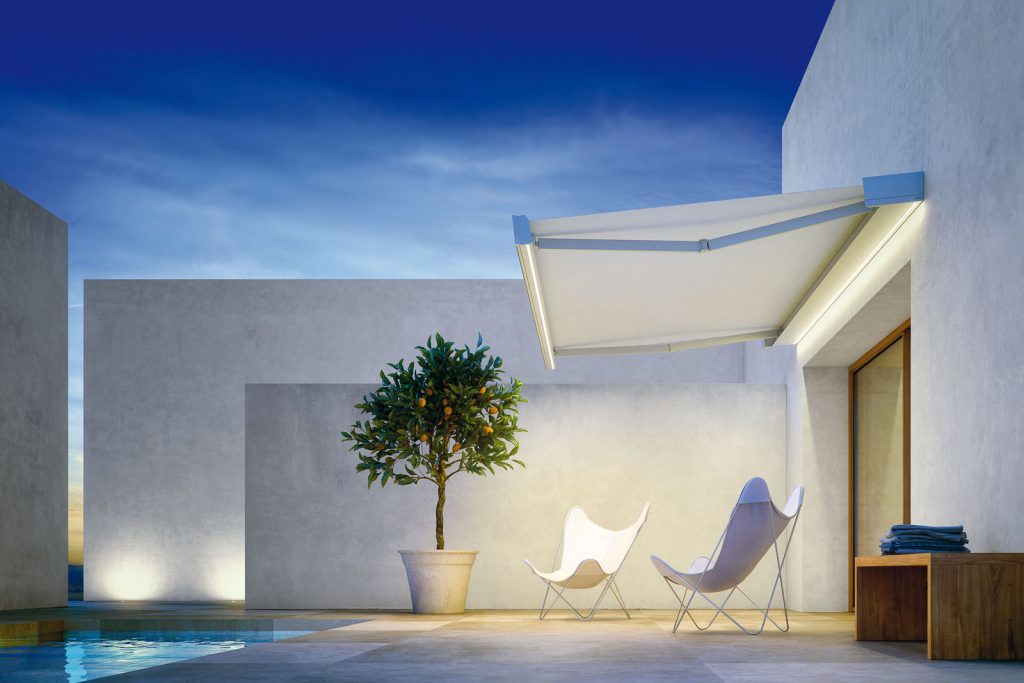
1. Fabric for outdoor awnings. Resistance and protection
To every covering needs corresponds a suitable fabric, for that reason is necessary to carefully consider not just the type of desired outdoor structure, but also the components and materials to match it with.
Fabrics for outdoor awnings – unlike the indoor awnings – are often subjected to intense climatic phenomena. Sun, rain, hail and strong wind can cause damage or premature ageing of the fabrics if they are not suitable for the desired use. To identify the perfect technology, it is important to consider a few basic aspects:
- Define the desired outdoor structure.
This is a crucial step to take into consideration when it comes to fabrics, as technologies and applications change profoundly depending on the desired structure. Fabric options considered highly efficient for pergolas may not have the same benefits when installed on retractable arm awnings or drop-down awnings. Once the outdoor structure has been identified, the fabric can be selected from the range specifically designed for the solution chosen. - Identify the primary need of the awning.
When choosing the fabric for an awning, it is essential to evaluate the benefit you want to achieve from its use. Shielding from sun, rain, visual comfort, protection with high UPF factor: by identifying the primary need, it will be even easier to identify the optimal technology. - Leaning on an expert.
It is always useful to consult an expert who is able to follow each customer in the choice of the most suitable fabric, suggesting the right customizations, which allow the awning to adapt to the surrounding architectural context.
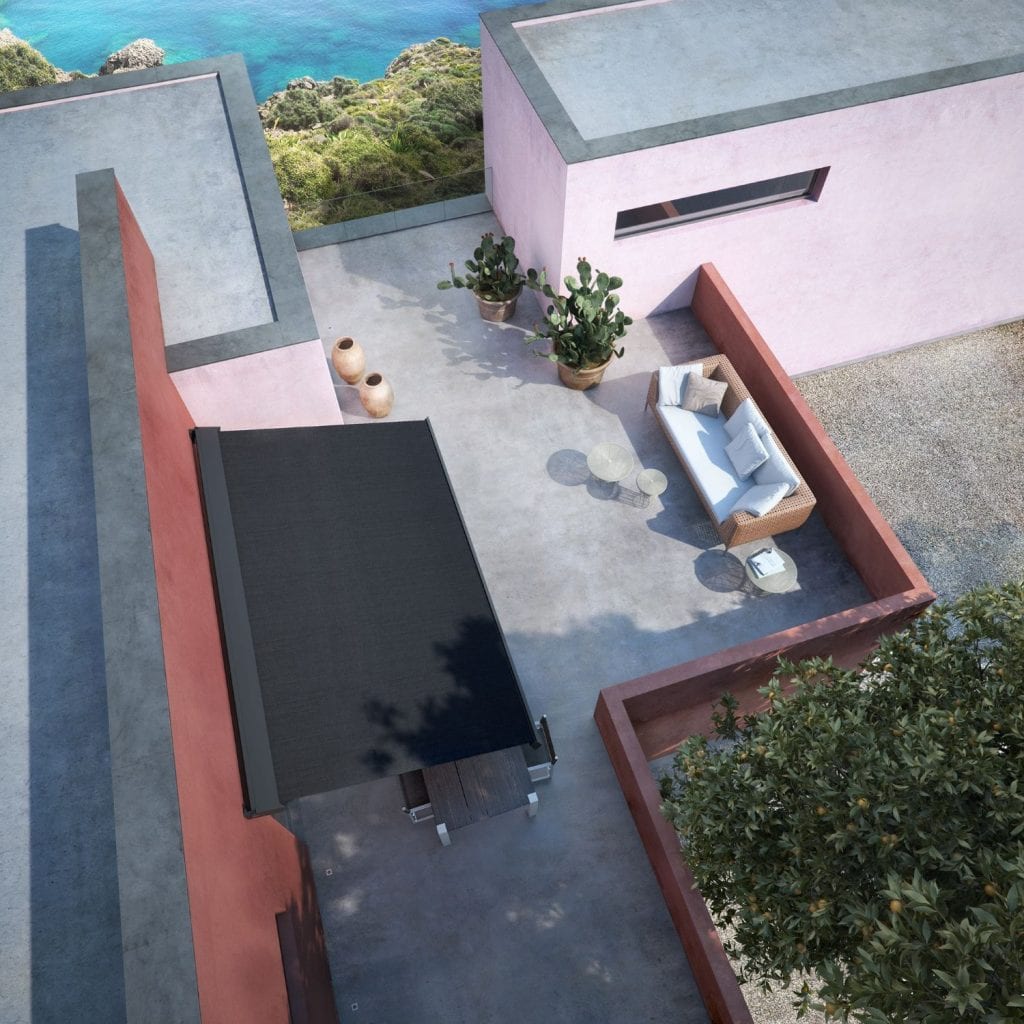
2. Maximum customization with acrylic fabric for awnings
Acrylic fabric for awnings is the most widely used material in the outdoor world, as well as the one that lends itself to the most different customizations, thanks to a very wide range of colors and the possibility of creating color bands of different shades.
It is a fabric with a textile look and consistency, very light and elastic: aesthetic qualities that also correspond to excellent characteristics of breathability and fastness to sunlight, which make the acrylic fabric ideal for use in shading large sunny areas. At the same time, all acrylic fabrics for awnings are treated with special water-repellent solutions that allow the awning to withstand medium intensity rainfall, allowing faster and easier cleaning.
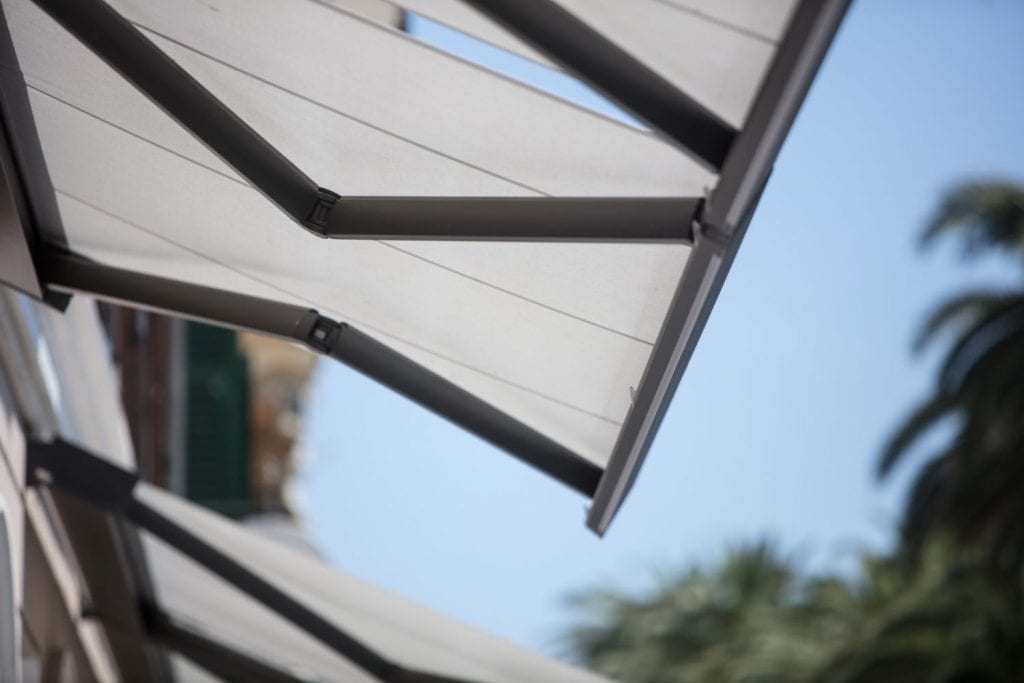
Awnings made of acrylic fabric 
Awnings made of acrylic fabric 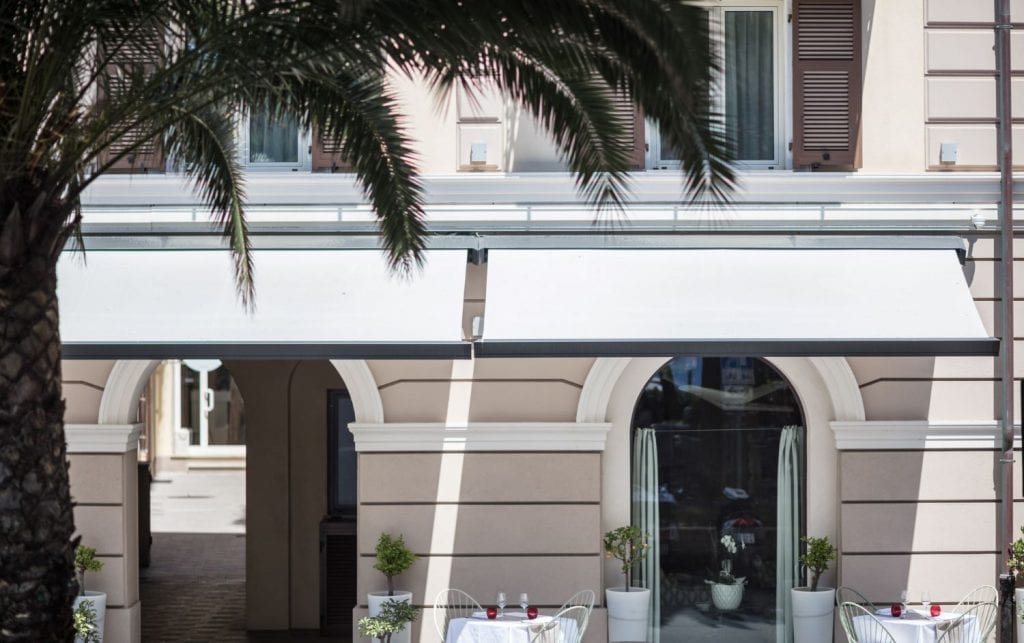
Awnings made of acrylic fabric 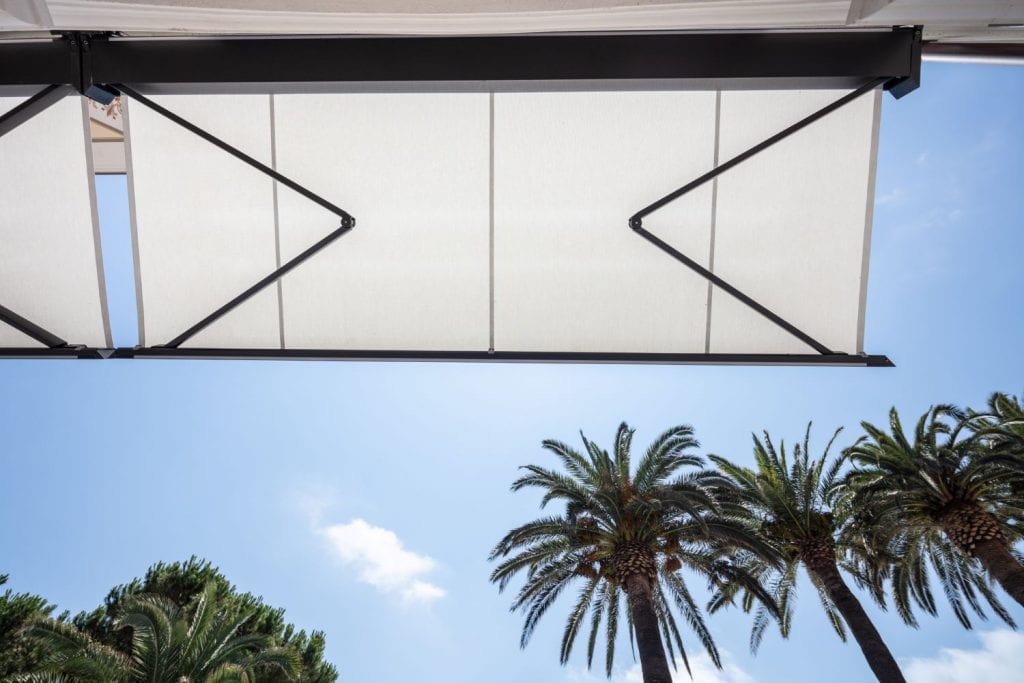
Awnings made of acrylic fabric
One aspect to evaluate during the purchase time is undoubtedly the maintenance: to prevent premature ageing or the onset of mould, the acrylic fabric curtain must be always rolled up when dry. Awnings with box are the most suitable for acrylic fabrics, as they protect them from water and humidity infiltration. If the awning is rolled up during an episode of rain, simply open it again and let it dry in the sun.
3. Soltis, the new generation of fabrics for awnings
Soltis fabric for awnings was created with the aim of combining textile aesthetics with even more advanced and high-performing technical features. These types of coverings are made of précontraint technology, or pre-tensioning. During the production process, the high resistance polyester weft is subjected to tensioning in the direction of the weft and warp, then it is coated with a PVC compound for resistance to UV rays, fire and mould. The result is a better resistance to tearing, sun damage and deformation, as well as easier cleaning.
The surface of the Soltis fabric is perfectly flat and has a minimum thickness, which ensures minimal bulk when rolled up. There is also a wide range of natural shades that perfectly match the colour range of the Pratic awnings and pergolas.
Thanks to its micro-perforated structure, the Soltis fabric is the best compromise between thermal protection and visual comfort. The opening coefficient of the weave can vary from 1 to 14% and determines the visibility to the outside and the degree of protection against UV rays: a larger opening will allow better visibility and a lower UPF factor, on the contrary, a smaller opening will guarantee maximum privacy and a sun protection factor that can reach 50+ in value.
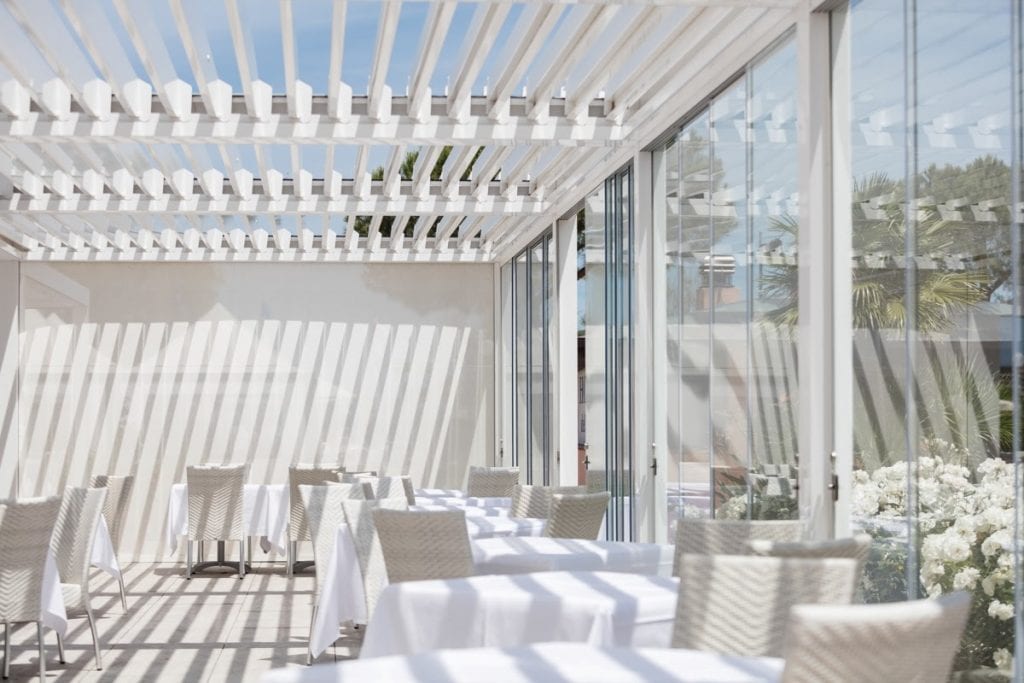
Soltis fabric for awnings and pergolas 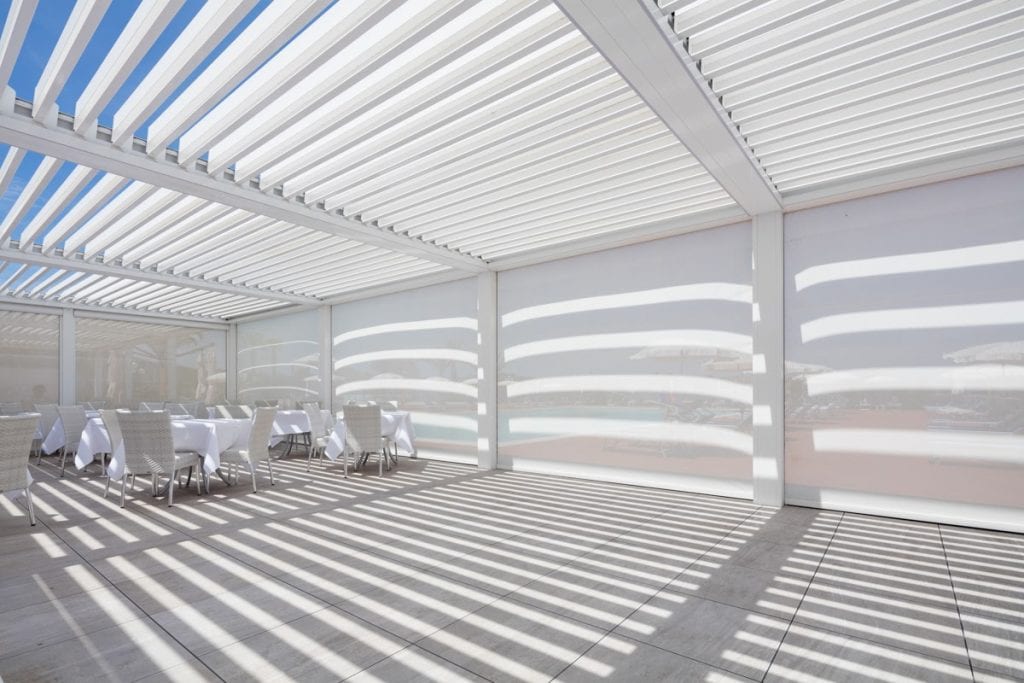
Soltis fabric for awnings and pergolas 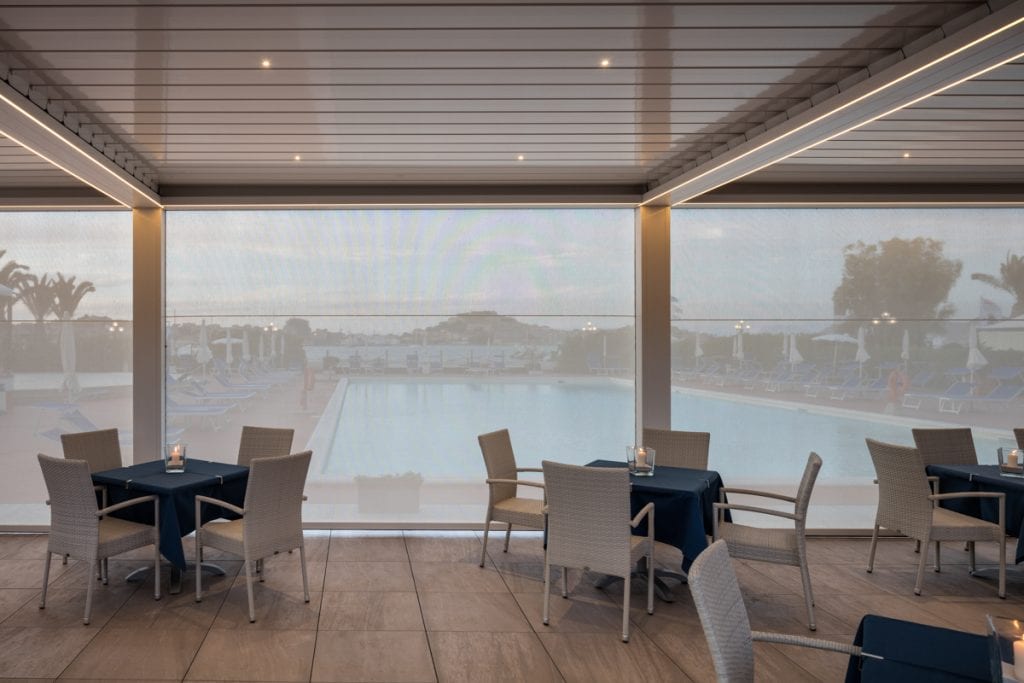
Soltis fabric for awnings and pergolas
Moreover, the Soltis fabrics combine effective sun protection with a constant supply of natural light, allowing the awning to play an active role in the consumption management of each building. When positioned to shield a glazed surface, the Soltis fabric helps to reduce the value of solar transmission and absorption (gtot) inside the room, thus limiting heating. In this case, the colour and the position of the curtain play a primary role: the winning combinations have always been dark colours combined with outdoor blinds and light colours in combination with indoor blinds. An aspect of comfort with an environmental and economic benefit is represented by the possibility of reducing energy consumption and benefitting from tax incentives on those awnings able to keep the solar transmission and absorption value (gtot) below the threshold of 0.35.
Due to its characteristics, the Soltis fabric is recommended for drop-down awnings and Zip awnings that screen the perimeter of the pergolas. However, the use is also possible for retractable arm awnings, when these are used only for shading, as the micro-perforation of the Soltis fabric does not guarantee waterproofing, but instead allows you to benefit – below the awning – from a perceived temperature much lower than the surrounding environment.
4. Protective and filtering: this is the Screen fabric
Among the latest-generation materials, also glass fibre yarn stands out for its properties. It is a light filtering fabric, very pleasant to the eye and to the touch, because it is able to perfectly reproduce the characteristics of a traditional and very soft yarn.
The aesthetics is at its highest level and is accompanied by excellent traction strength, as well as extraordinary insulating and fire retardant properties, which make the glass fibre yarn the ideal fabric for internal screening of glass sections, as well as for drop-down and vertical roller awnings for outdoor.
A fabric for awnings easy to clean and maintain, with a lot of customization possibilities and great resistance to humidity, corrosion and extreme temperatures.
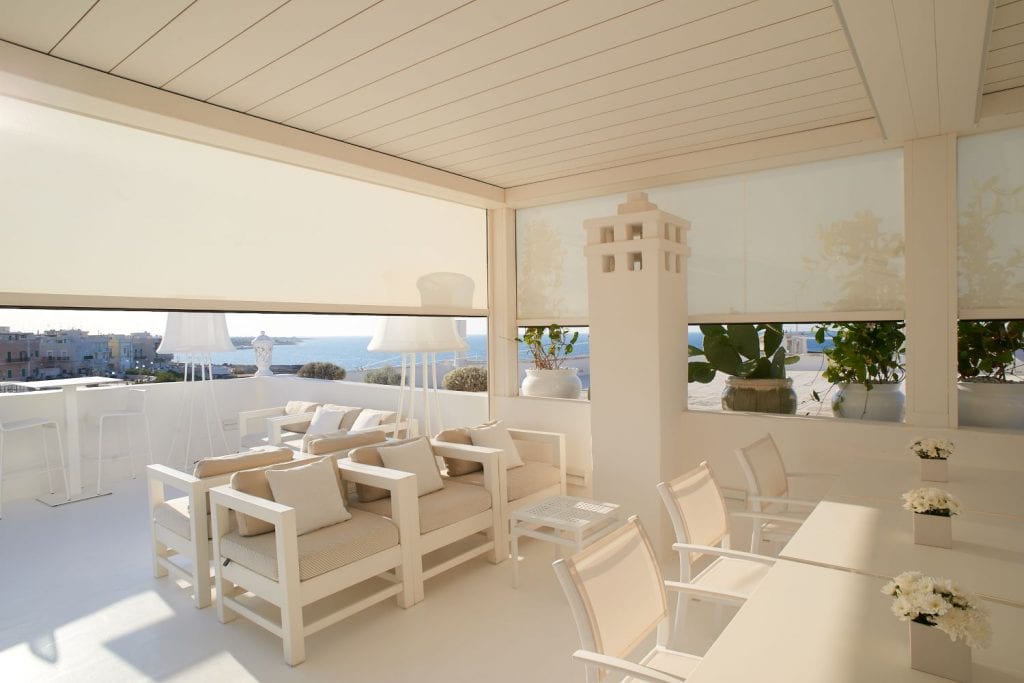
Awnings made of Screen fabric 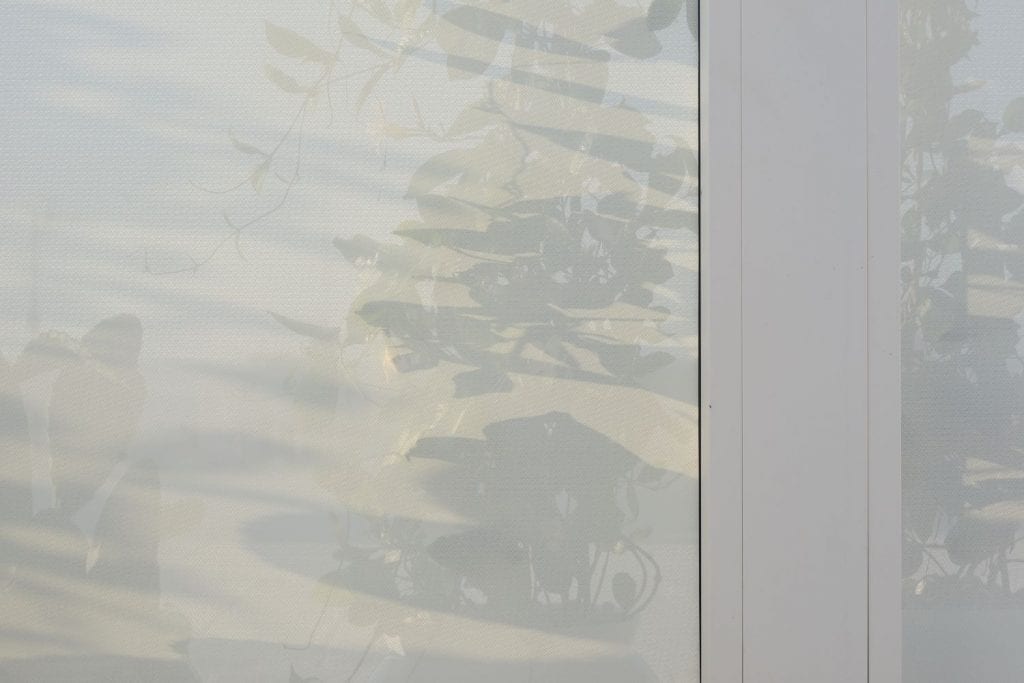
Awnings made of Screen fabric 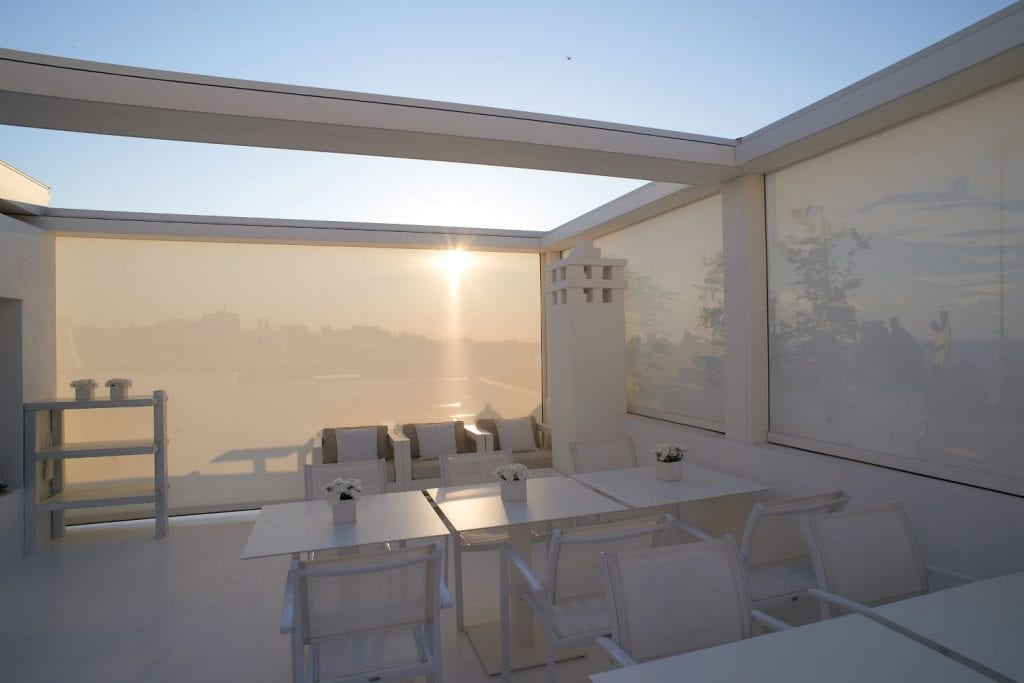
Awnings made of Screen fabric 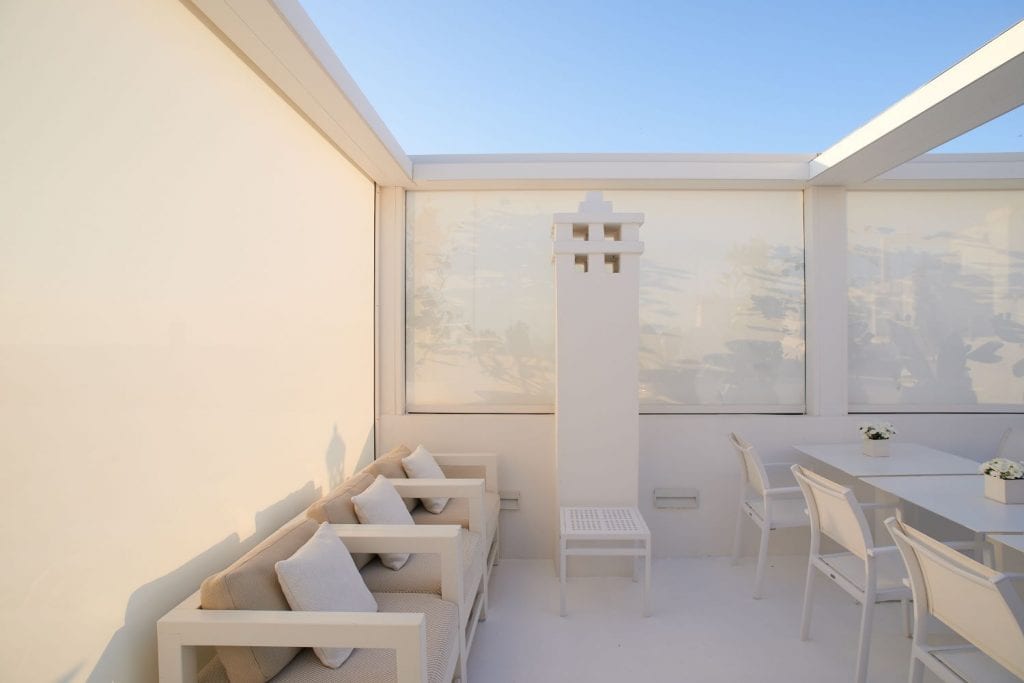
Awnings made of Screen fabric
5. Waterproof fabric for awnings: the comfortable shelter against the rain
When it comes to shielding against wind and rain, there is no more effective technology than PVC fabrics: resistant, waterproof and able to reach large dimensions, maintaining the perfect tensioning of the fabric.
PVC fabric could be used for covering retractable arm awnings giving excellent waterproofness, but it is characterized by two main possibilities of use, where the Pergola is the protagonist.
For the covering of structures with retractable fabric, Pratic uses blockout PVC fabric: darkening, fireproof and recyclable. Also in this case the technology chosen is précontraint, which guarantees even more dimensional stability and resistance to the most intense atmospheric phenomena.
A second application is dedicated to the perimeter screening of pergolas, for which it is possible to choose the special Cristal transparent fabric. It is a transparent film, based on PVC resin, with low thermal conductivity, therefore ideal to protect from atmospheric agents, but also from UV rays, to which it is highly resistant. The special construction of the film gives it a mechanical resistance suitable for use on large structures or in motorized vertical closure systems.
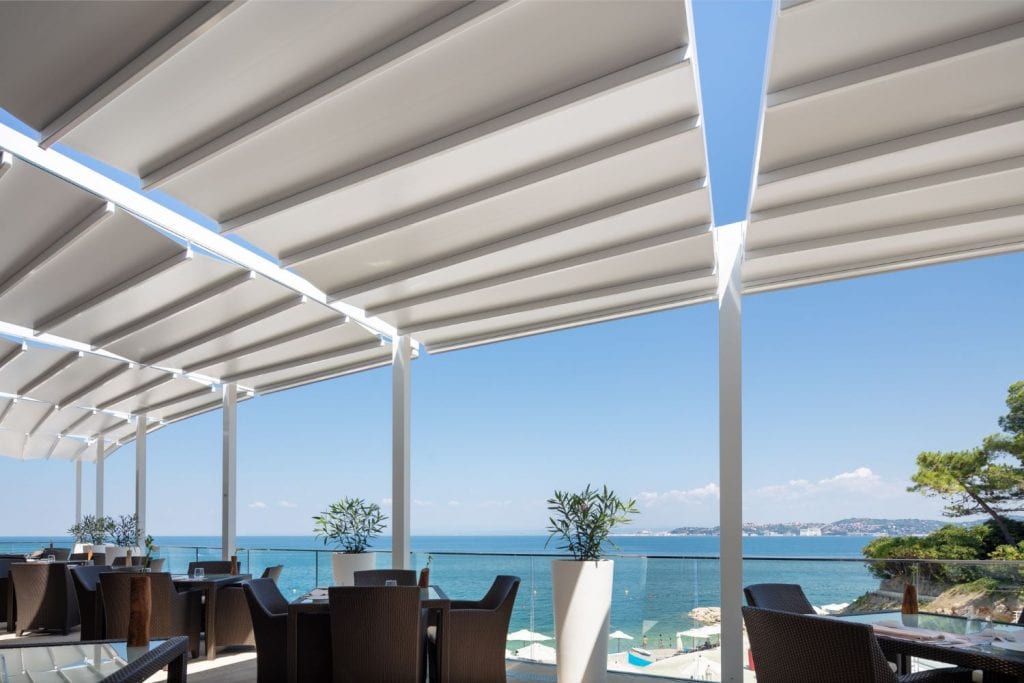
Covering made of PVC fabric 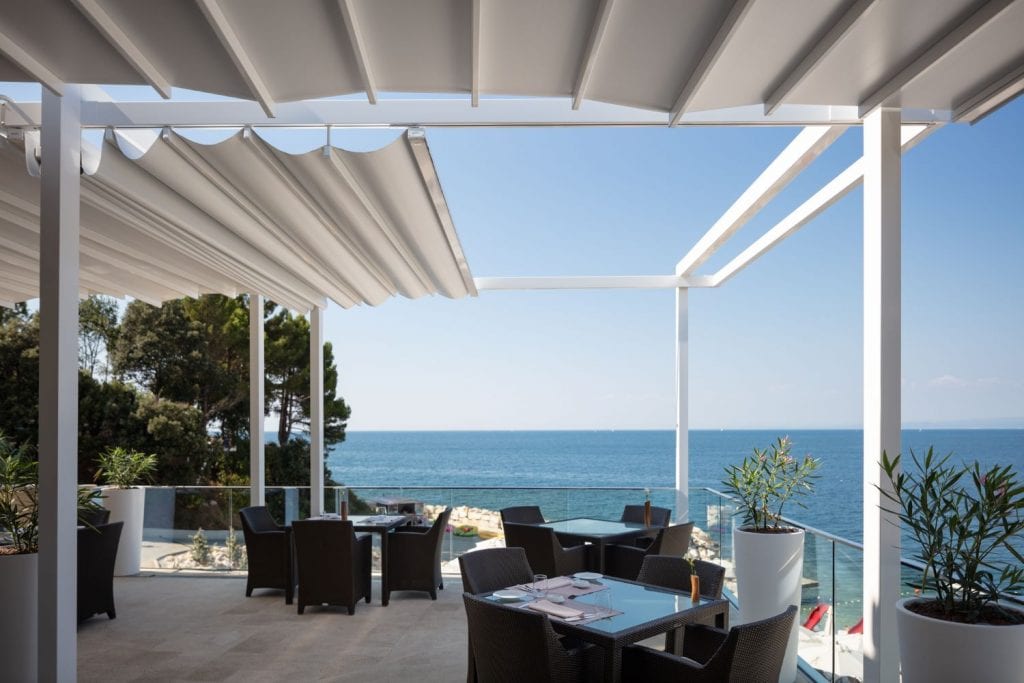
Covering made of PVC fabric 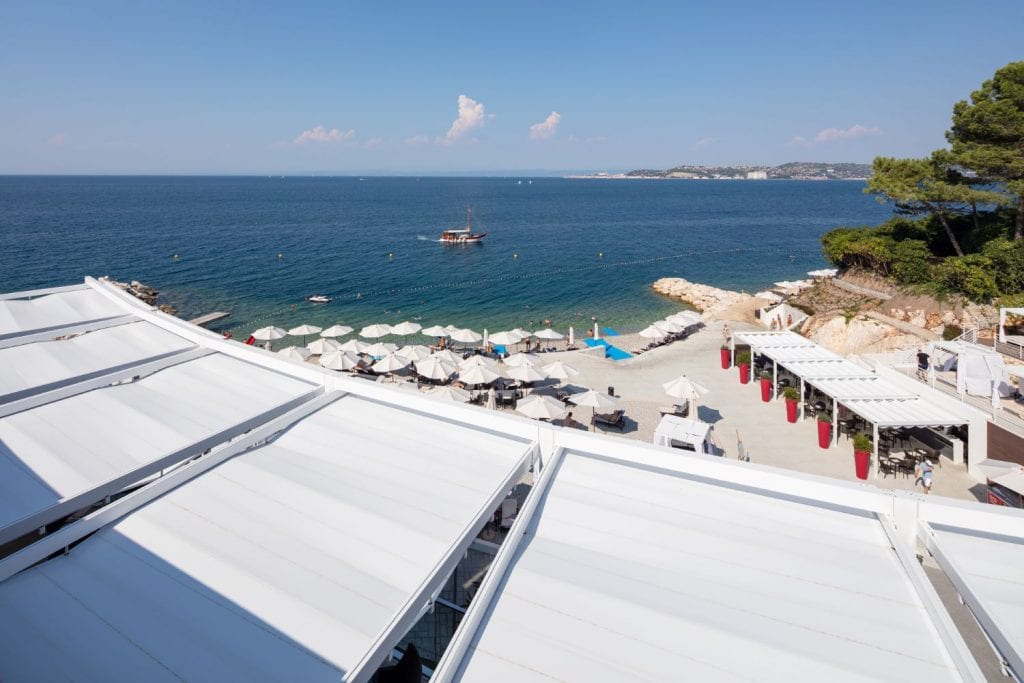
Covering made of PVC fabric 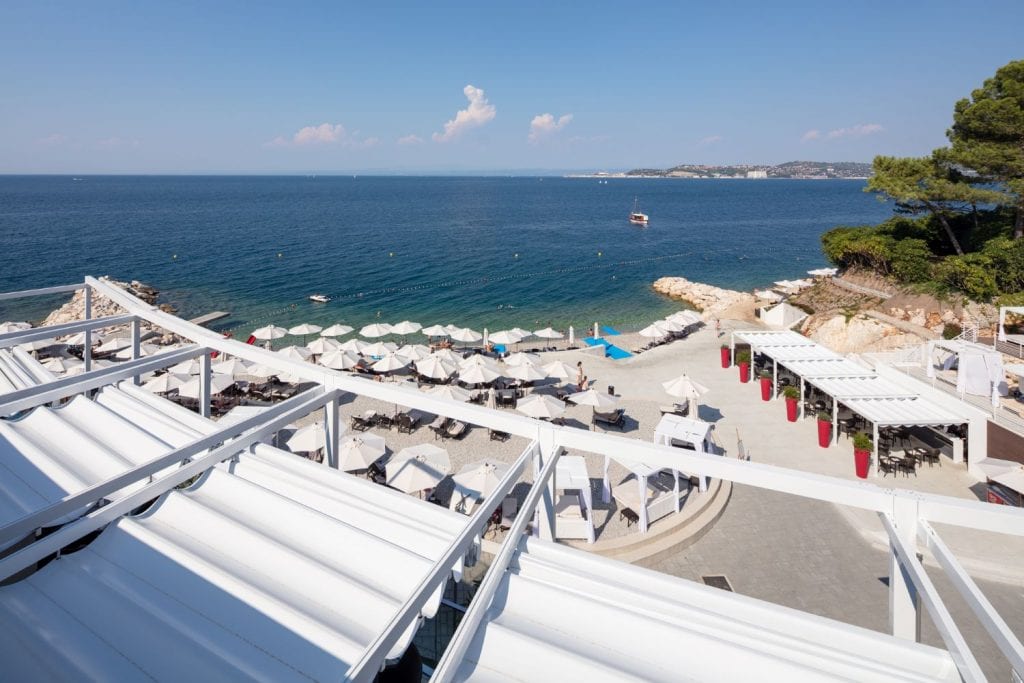
Covering made of PVC fabric
Available also in smoked-shading colours – easier to clean, Cristal fabric stands out also for its soundproofing qualities, particularly functional for public areas, such as bars, restaurants and hotels.
6. Optional and customization to complete the project
Once you have chosen the fabric for your awning, you just have to decide the style and the customization of the covering.
Together with the many colours of the Pratic collection, you can select some special accessories such as ornamental fabrics, designed to customize the undercover of the pergolas with PVC covering. In addition, there is the special Mosquito fabric for curtains: an elegant anti-insect net made of polyester with an opening coefficient of 50% for a unique visual comfort and a discreet and pleasant shading; it also falls within the range suitable for tax deductions.
7. Cleaning and maintenance tips for fabrics
The maintenance of Pratic’s awnings needs few small and easy measures that help to preserve unchanged the performance and the aesthetics of each product.
For ordinary cleaning, the use of soft sponges, lukewarm water and neutral soap is recommended. Abrasive brushes, high-pressure cleaner and acid, alkaline and high-alcohol content solutions should be avoided. To keep the cloth always perfect, it is then necessary to rinse it thoroughly with water, dry it completely in the sun and, if desired, apply a specific protective product.
A delicate rubbing of the surface is allowed just in case of resin or mould stains: for the cleaning a solution of water and commercial bleach can be used if necessary, with a recommended ratio of 1:4. At the end, simply rinse the cloth with plenty of water and let it dry in the sun.
Contact Us
News